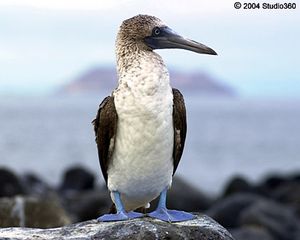To humans, Avian flight can seem to be a simple, effortless, freeing experience. Birds seem to flap effortlessly to great heights before they coast and find a thermal, staying aloft for hours at a time.

As we know, this is far from the case. The flight of a bird is extremely complex in many respects, the most evident being their intricate wing strokes. Perhaps just as important, yet less obvious, is their breathing.
While it may seem that a bird is barely exerting itself by flapping its wings, it is a very taxing motion involving a lot of muscle power. One primary evolutionary adaption to this level of exercise is the presence of a highly specialized respiratory system. Mammals like you and I breath in a bidirectional manner, with our lungs filling with air, then exhaling in the same manner. This causes some of the air inhaled to not be fully exhaled, mixing with newly inhaled air during the next breath. This is inefficient, as the stagnant air in a mammal’s lung contains less oxygen than fresh air, allowing less oxygen to enter the bloodstream and power muscular contraction.

Avian respiratory systems have evolved to be unidirectional, filling and draining with different motions. The key to this adaption is the presence of not only two lungs, but also two posterior air sacs, and two anterior air sacs. When a bird inhales it fills its posterior air sacs as well as it’s lungs and anterior air sacs. Then, when it exhales, air moves from the posterior air sacs into the lungs, and from the lungs and anterior air sacs out of the body. This is complicated to explain in words, thus it may be helpful to reference the animation included below (please excuse that it is not embedded, it is a flash animation).
Here is a video which shows the same process from a different perspective:
This makes sense, as relatively large amounts of power are lost to drag and gravity while a bird attempts to keep aloft, thus it must be working its muscles very hard. For muscles to work without building up too much lactic acid they have to be fed an ample supply of oxygen. It would be difficult for a bird could gain sufficient oxygen for flight from the bidirectional lungs found on mammals, thus they had to evolve the more efficient, capable, unidirectional respiratory system.
Sources:
2 Comments
Ryan Erf posted on October 18, 2011 at 11:09 am
How do bats overcome this problem? Since they are mammals I assume they have the standard bidirectional lungs so does this put them at a disadvantage while flying relative to a bird?
Lorena Barba posted on October 18, 2011 at 1:15 pm
This is a very cool post, addressing another aspect of adapting to flight. It is fascinating, and quite complicated!